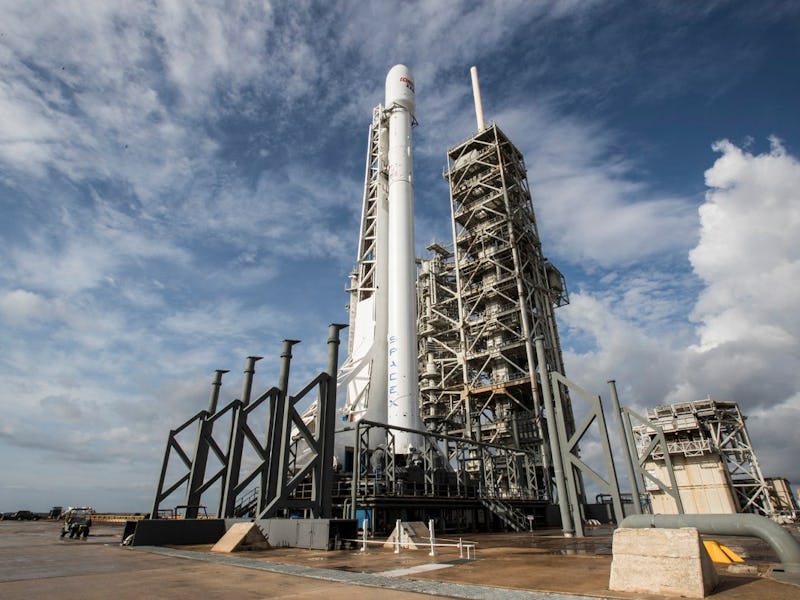SpaceX had to postpone its latest rocket launch on Tuesday. The company was initially planning to launch the EchoStar 23 communications satellite into geostationary transfer orbit (GTO), over 22,000 miles above the Earth’s surface, using a Falcon 9 rocket. Unfortunately, due to high winds, the company decided to pull the plug.
The launch had been scheduled to take place at 1.34 a.m. EST from Launch Complex 39A at NASA’s Kennedy Space Center in Florida, with the satellite set to deploy around 34 minutes after liftoff.
Instead, the company will now look at the next launch opportunity. SpaceX has yet to confirm when the next liftoff attempt will be scheduled for, but a backup launch window was originally scheduled to open on Thursday, March 16, at 1:35 a.m. EST.
The launch was already delayed from its initially scheduled date of March 12 due to issues surrounding the static firing sequence. Initially scheduled to take place last Tuesday, the rocket test was delayed 48 hours due to an unspecified issue, eventually completing the routine check last Thursday.
It would have been the second launch from complex 39A. SpaceX signed a 20-year lease to the complex with NASA in 2014, with the company bringing upgrades to the center that can better support Falcon 9 and Falcon Heavy launches.
But unlike most SpaceX missions, the company didn’t plan for a landing of its Falcon 9 first stage booster. The landing has become something of a legendary feature of Falcon 9 launches: they’re impressive, sometimes they go wrong, and the ability to reuse rockets will help the company plan for an eventual mission to Mars. Reducing the costs associated with spaceflight helps SpaceX plan for more ambitious missions. This time, though, SpaceX had planned to say goodbye to the Falcon 9 in the Atlantic.
When it launches, the EchoStar 23 satellite will provide broadcast satellite services alongside 25 others operated by the Colorado-based company, the fourth-largest fleet in the world, with an operational lifetime of 15 years. The satellite needs to reach GTO to properly communicate, which requires a lot more propulsion.
Unfortunately, as the satellite weighs around 12,000 pounds, the rocket needed a lot more propellant to lift off in the first place. A droneship landing, which would have required extra propellant to ensure a smooth re-entry, was out of the question.
This isn’t necessarily how every GTO launch will go, though. The company is currently working on a new variant called the Falcon 9 Full Thrust with super-chilled liquid oxygen. This would allow for a greater amount of propellant inside each rocket tank. The Falcon 9 Block 5 rocket, another version in development, would also allow for greater performance.
After the EchoStar launch, the next launch is scheduled to take place on March 27. A re-used Falcon 9 rocket will launch an SES-10 telecommunications satellite from the Kennedy Space Center. Luxembourg-based satellite operator SES became the first company to book a ticket aboard a previously-used rocket when it made the plans in August 2016.
